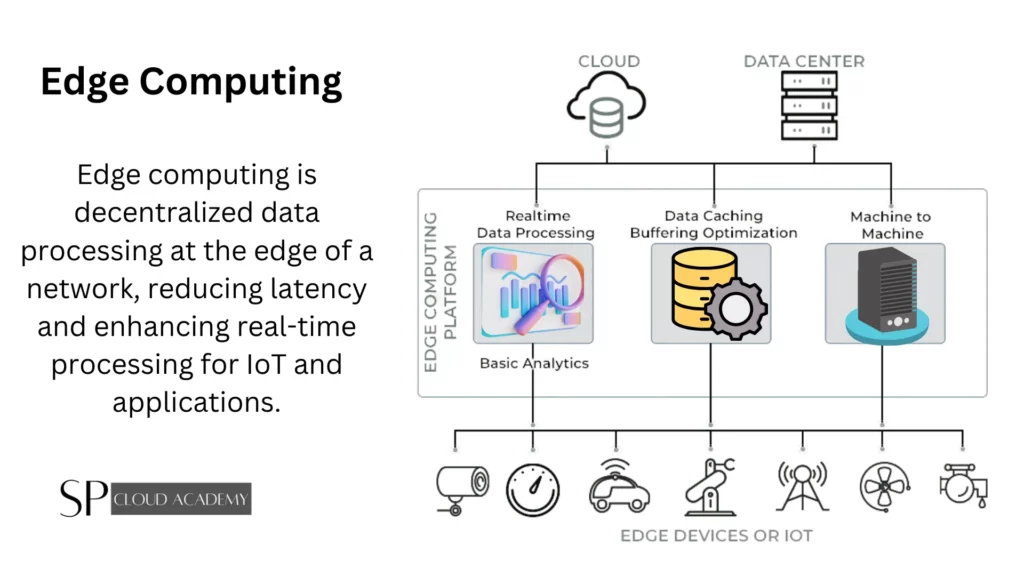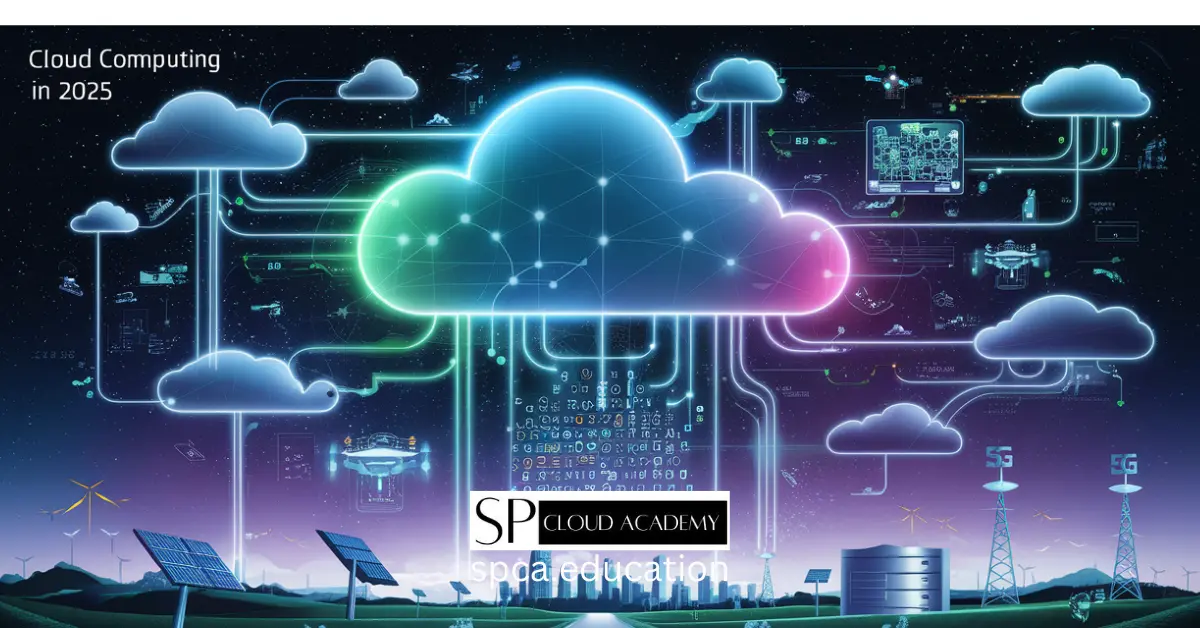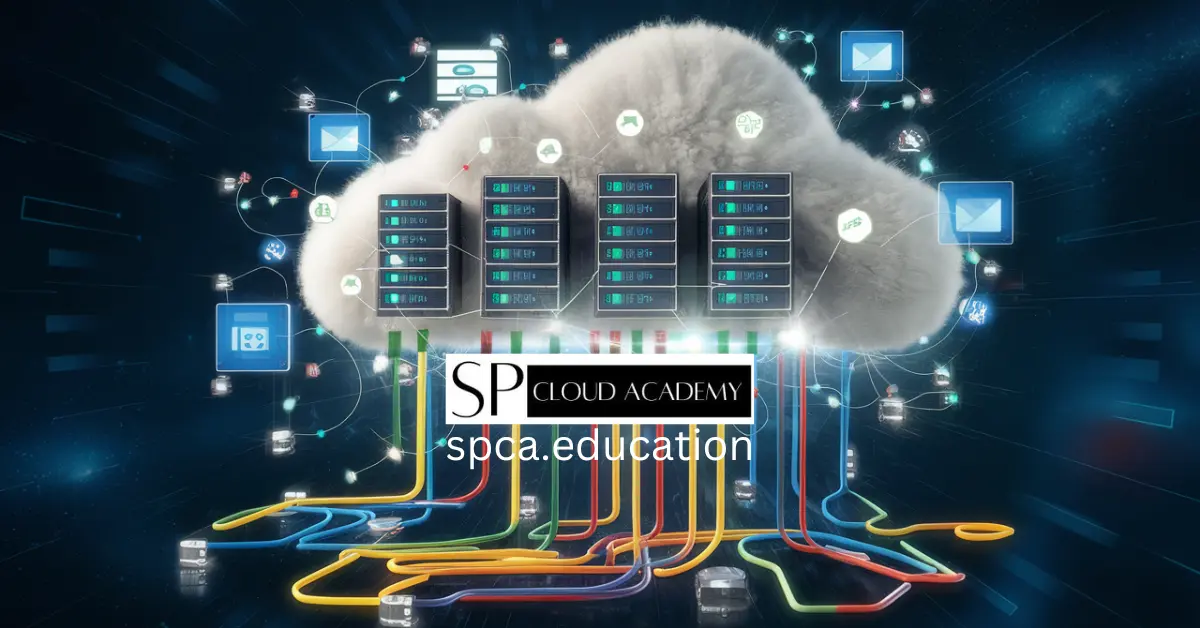Cloud Trends and Future Directions: A Discussion on Emerging Trends and the Future of Cloud Computing
Cloud computing has revolutionized the way businesses and individuals manage data and applications. It offers scalability, flexibility, and cost-efficiency, making it a vital component of modern IT infrastructure. In this article, we will delve into the evolving landscape of cloud computing, highlighting emerging trends and future directions that are shaping the industry. Staying abreast of these developments is crucial for businesses and professionals seeking to harness the full potential of the cloud while ensuring security and sustainability. This discussion will cover the present state of cloud computing, explore emerging trends like edge computing and AI integration, address security and compliance challenges, consider the impact of quantum computing, and emphasize the importance of sustainability. Join us on this journey to understand the dynamic world of cloud computing and prepare for its exciting future.
Current State of Cloud Computing
Cloud computing has evolved into a pivotal technology underpinning modern businesses and individual activities. To grasp its current state, let’s delve into the historical context, key industry players, widespread adoption, and market dynamics.
A. Brief History of Cloud Computing
- Early Origins: Cloud computing can trace its roots back to the 1960s when the concept of time-sharing allowed multiple users to access a central computer simultaneously.
- Mainframe Era: In the 1970s and 1980s, mainframes and client-server models dominated computing, setting the stage for centralized data processing.
- AWS Revolution: A turning point came in 2006 when Amazon Web Services (AWS) introduced its cloud services, making it accessible to a global audience.
- Era of Growth: Subsequent years witnessed the rapid growth of cloud computing, with various providers offering Infrastructure as a Service (IaaS), Platform as a Service (PaaS), and Software as a Service (SaaS).
B. Key Players in the Cloud Industry
- Amazon Web Services (AWS): Dominating the market with a vast array of services, AWS has been a pioneer in making cloud computing accessible and scalable.
- Microsoft Azure: A close competitor, Azure offers a comprehensive suite of cloud services and integration with Microsoft products.
- Google Cloud: Known for its strength in data analytics, Google Cloud is a key player in the field.
- IBM Cloud: Offering hybrid cloud solutions and catering to enterprises, IBM is a significant player.
- Emerging Players: Smaller providers and regional players are gaining ground, contributing to a diverse ecosystem.
C. The Widespread Adoption of Cloud Services
- Everyday Use: Cloud technology is an integral part of everyday life, with services like email, social media, and streaming platforms relying on it.
- Enterprise Adoption: Businesses across industries have adopted cloud infrastructure for data storage, software deployment, and scalable computing resources.
- Industry Applications: Cloud computing powers innovations in healthcare, finance, e-commerce, and many other sectors, enhancing efficiency and reducing costs.
D. Market Size and Growth
- Market Size: The global cloud computing market has grown exponentially, with a value exceeding hundreds of billions of dollars.
- Factors Driving Growth: The shift to remote work, the proliferation of data-driven applications, and the need for cost-effective and scalable solutions are driving the industry’s growth.
- Future Projections: The cloud computing industry is expected to continue its expansion. Emerging trends like edge computing, serverless architectures, and hybrid cloud solutions will shape the industry’s future.
Understanding the current state of cloud computing is essential to contextualize the emerging trends and future directions discussed in this article. It showcases how cloud technology has evolved from its origins to become a cornerstone of modern computing and business strategies.
Emerging Trends in Cloud Computing
Edge Computing
1. Definition and Importance of Edge Computing
- Definition: Edge computing is a distributed computing paradigm that brings computation and data storage closer to the data source, such as IoT devices or sensors, rather than relying on a centralized cloud server. It processes data locally or in nearby edge servers, reducing latency and improving real-time processing capabilities.
- Importance:
- Latency Reduction: Edge computing is critical for applications that demand minimal latency, like autonomous vehicles or remote medical procedures. By processing data closer to the source, it minimizes the time data takes to travel to a central data center.
- Bandwidth Efficiency: It reduces the volume of data that needs to be transmitted to the cloud, saving on bandwidth costs.
- Privacy and Security: Edge computing allows for local data processing, which can enhance privacy and security by reducing the need to transmit sensitive data over networks.
- Reliability: In scenarios where network connectivity may be unreliable, edge computing ensures that critical functions can continue to operate.

2. Examples of Edge Computing Applications
- Autonomous Vehicles: Self-driving cars rely on edge computing to process sensor data and make real-time decisions, enhancing safety.
- Smart Cities: Edge computing supports various smart city applications, such as traffic management, environmental monitoring, and public safety.
- Healthcare: Remote patient monitoring devices use edge computing to process vital signs and alert medical professionals to critical changes.
- Retail: In-store analytics and inventory management benefit from edge computing, allowing for real-time data analysis.
- Industrial IoT (IIoT): Manufacturing processes and industrial machinery use edge computing for predictive maintenance, quality control, and process optimization.
- Augmented Reality (AR) and Virtual Reality (VR): Edge computing reduces latency in AR and VR applications, improving the user experience.
- Agriculture: Precision agriculture employs edge computing for real-time analysis of sensor data from tractors and drones to optimize crop yields.
Edge computing’s ability to provide rapid data processing and real-time decision-making is transforming various industries and is poised to be a fundamental element in the future of cloud computing.
Serverless Computing
1. What is Serverless Computing?
Serverless computing, also known as Function as a Service (FaaS), is a cloud computing model where cloud providers automatically manage infrastructure, allowing developers to focus solely on writing and deploying code. In this paradigm, developers execute functions without worrying about provisioning or managing servers, making it a powerful tool for building scalable and efficient applications.
2. Benefits and Use Cases
Benefits of Serverless Computing:
- Scalability: Serverless platforms automatically handle the scaling of functions in response to incoming requests, ensuring optimal performance without manual intervention.
- Cost-Efficiency: You only pay for the compute resources used during the execution of functions, reducing costs compared to traditional server-based solutions where you pay for idle resources.
- Simplified Development: Developers can focus on writing code rather than managing server infrastructure, reducing development time and effort.
- Event-Driven: Serverless is well-suited for event-driven and asynchronous applications. Functions can respond to events in real-time, making it ideal for applications like chatbots, IoT devices, and data processing pipelines.
- Automatic Maintenance and Scaling: Cloud providers handle maintenance tasks like patching, security updates, and scaling, reducing operational overhead.
- High Availability: Serverless architectures often provide built-in high availability, with functions distributed across multiple data centers or regions.
Use Cases for Serverless Computing:
- Web and Mobile Applications: Serverless is used to build the backends for web and mobile apps, handling functions like authentication, notifications, and data processing.
- IoT and Real-Time Data Processing: Serverless is well-suited for processing data from IoT devices, sensors, and real-time event streams.
- Data Transformation and ETL: Serverless functions can be employed to transform, filter, and load data between different data sources and databases.
- Chatbots and Voice Assistants: Chatbots and voice assistant applications leverage serverless to handle user interactions and natural language processing.
- Image and Video Processing: Serverless is used for processing and optimizing media files, such as resizing images or transcoding videos.
- Scheduled Tasks: Automating tasks like data backups, report generation, and system maintenance can be efficiently done using serverless functions.
Serverless computing simplifies the development process, reduces operational burdens, and allows organizations to build cost-effective, scalable, and event-driven applications. Its versatility makes it a compelling choice for a wide range of use cases.
Multi-cloud and hybrid cloud strategies
1. Advantages of Multi-Cloud and Hybrid Approach
Multi-cloud Strategy:
- Redundancy and Reliability: Multi-cloud setups distribute resources across multiple cloud providers, enhancing redundancy and fault tolerance. If one cloud provider experiences an outage, services can seamlessly failover to another provider.
- Avoid Vendor Lock-In: Using multiple cloud providers reduces the risk of vendor lock-in, allowing businesses to maintain flexibility and negotiate pricing.
- Optimized Services: Different cloud providers offer specialized services. A multi-cloud strategy enables businesses to choose the best services for their specific needs, enhancing performance and functionality.
- Geographical Reach: Multi-cloud can help in deploying resources closer to users across the globe, reducing latency and improving user experience.
Hybrid Cloud Strategy:
- Data Control: Sensitive or critical data can be kept on-premises in a private cloud, providing businesses with greater control and security over their data.
- Scalability: Hybrid cloud allows organizations to scale resources seamlessly. Bursting into the public cloud during peak demand can be cost-effective.
- Cost Optimization: By balancing workloads between on-premises infrastructure and the public cloud, businesses can optimize costs while meeting performance requirements.
- Compliance: Industries with strict regulatory requirements can use a hybrid model to ensure data compliance while leveraging cloud benefits.
2. Challenges and Considerations
Multi-cloud Strategy Challenges:
- Complexity: Managing resources across multiple cloud providers can be complex. Different platforms may have varying interfaces, management tools, and APIs.
- Data and Application Interoperability: Ensuring data and applications work seamlessly across different clouds can be challenging.
- Cost Management: Cost optimization becomes more complex with multiple cloud providers. Monitoring and controlling spending can be challenging.
- Security: Coordinating security policies and practices across multiple clouds requires a robust strategy to avoid vulnerabilities and data breaches.
Hybrid Cloud Strategy Challenges:
- Integration: Ensuring seamless integration between on-premises infrastructure and the public cloud can be technically challenging.
- Data Management: Effective data management, including data synchronization and backup between on-premises and the cloud, is essential.
- Resource Allocation: Allocating resources effectively and automating resource scaling is crucial to optimize costs.
- Security and Compliance: Maintaining consistent security and compliance policies between on-premises and the cloud can be complex.
Incorporating multi-cloud and hybrid cloud strategies offers numerous advantages, but businesses must carefully consider and address the associated challenges to ensure a successful and secure implementation. Proper planning, management, and monitoring are key to leveraging the benefits while mitigating potential drawbacks.
Artificial Intelligence (AI) and Machine Learning (ML) integration
1. AI and ML in the Cloud
AI and ML Services: Cloud providers, including Amazon Web Services (AWS), Microsoft Azure, and Google Cloud, offer a wide array of AI and ML services. These services include:
- AI APIs: Pre-built APIs for natural language processing, computer vision, and speech recognition.
- Machine Learning Platforms: Tools and frameworks for building, training, and deploying machine learning models.
- AI-optimized Infrastructure: Cloud providers offer specialized hardware, like Graphics Processing Units (GPUs) and Tensor Processing Units (TPUs), to accelerate AI and ML workloads.
- Data Storage and Processing: Cloud services facilitate data storage, integration, and processing, crucial for AI and ML projects.
Scalability: Cloud platforms enable easy scalability, allowing organizations to expand their AI and ML projects as needed. They can easily allocate more resources to accommodate growing data and processing demands.
Data Access and Integration: Cloud services provide access to vast datasets and support data integration. This is particularly useful for training machine learning models on diverse and extensive data sources.
2. Use Cases and Benefits
Use Cases:
- Natural Language Processing (NLP): AI-powered chatbots, sentiment analysis, and language translation are made possible through cloud-based NLP services.
- Computer Vision: Image and video analysis for facial recognition, object detection, and autonomous vehicles.
- Recommendation Systems: Cloud-based AI and ML power recommendation engines in e-commerce and content platforms.
- Anomaly Detection: Identifying anomalies in data for fraud detection, network security, and predictive maintenance.
- Healthcare: Cloud-based AI assists in medical image analysis, disease prediction, and drug discovery.
- Financial Services: Risk assessment, fraud detection, algorithmic trading, and customer service chatbots all benefit from AI and ML in the cloud.
- IoT: AI and ML in the cloud enable real-time analytics and decision-making for IoT devices and sensors.
Benefits:
- Cost-Efficiency: Cloud services offer pay-as-you-go models, eliminating the need for upfront hardware investments and providing flexibility in resource allocation.
- Speed and Agility: Rapid deployment and scaling of AI and ML models are achievable through cloud platforms.
- Access to Advanced Tools: Cloud providers offer a wide range of tools and frameworks for AI and ML development, reducing development time.
- Global Reach: Cloud services provide the infrastructure to deploy AI and ML solutions globally, closer to end-users, reducing latency.
- Security and Compliance: Cloud providers offer robust security measures and compliance certifications, essential for AI and ML in sensitive domains.
Integrating AI and ML with cloud computing is transforming industries, enabling businesses to leverage advanced technologies without the complexities of managing infrastructure. Cloud-based AI and ML solutions are driving innovation, enhancing efficiency, and providing organizations with a competitive edge.
Security and Compliance
A. The Importance of Security in Cloud Computing
Security Concerns in Cloud Computing:
- Data Breaches: Unauthorized access to data stored in the cloud is a significant concern.
- Data Loss: Ensuring data integrity and availability is crucial.
- Access Control: Controlling access to sensitive data and resources is a fundamental security aspect.
- Compliance: Meeting regulatory requirements and industry standards is essential.
Importance of Cloud Security:
- Protecting sensitive information: Cloud services host vast amounts of sensitive data, necessitating robust security measures.
- Business Continuity: Secure cloud environments ensure business continuity by preventing data loss and service interruptions.
- Reputation and Trust: Data breaches can severely damage an organization’s reputation and erode trust.
- Legal and Regulatory Compliance: Meeting data protection laws is mandatory.
B. Trends in Cloud Security
1. Zero Trust Security Model:
- Definition: Zero Trust is a security framework that assumes no trust, even within an organization. It requires identity verification for every user and device trying to access resources, regardless of their location.
- Benefits: Zero Trust enhances security by minimizing attack surfaces, reducing the risk of lateral movement in the event of a breach, and increasing visibility and control over network traffic.
2. Identity and Access Management (IAM):
- Definition: IAM is the practice of controlling access to resources by managing digital identities. It involves authentication, authorization, and access management.
- Benefits: IAM ensures that the right people have the right access to the right resources. It enhances security by controlling user privileges and reducing the risk of unauthorized access.
C. Compliance and Regulatory Challenges
1. GDPR, HIPAA, and Other Regulations:
- GDPR: The General Data Protection Regulation (GDPR) is a European Union regulation governing data protection and privacy. It places stringent requirements on organizations handling personal data.
- HIPAA: The Health Insurance Portability and Accountability Act (HIPAA) sets standards for the protection of healthcare data in the United States.
- Other Regulations: Depending on the industry, organizations may need to comply with various regulations, such as PCI DSS (payment card data security) and SOX (financial reporting).
2. Compliance Automation Tools:
- Definition: Compliance automation tools help organizations streamline compliance efforts by automating tasks like data monitoring, reporting, and auditing.
- Benefits: These tools reduce the burden of manual compliance efforts, ensure accuracy, and provide real-time visibility into an organization’s compliance status.
Ensuring robust security and compliance in the cloud is paramount. Emerging trends like the Zero Trust model and IAM bolster cloud security, while compliance automation tools help organizations efficiently adhere to regulatory requirements like GDPR and HIPAA, safeguarding sensitive data and ensuring legal compliance.
Quantum Computing and Cloud
Quantum computing is a revolutionary technology that has the potential to disrupt various industries and bring about significant changes in cloud computing. Here, we explore the connection between quantum computing and the cloud:
1. Quantum Computing Overview:
- Quantum Bits (Qubits): Quantum computers use qubits, which can represent multiple states simultaneously due to the principles of superposition and entanglement. This enables quantum computers to process vast amounts of data in parallel.
- Quantum Supremacy: Quantum supremacy refers to the point at which a quantum computer can perform tasks that are practically impossible for classical computers to complete in a reasonable time frame. While this milestone hasn’t been fully achieved yet, quantum computing is making rapid advancements.
2. Quantum Computing and the Cloud:
- Access to Quantum Computing: Cloud providers are beginning to offer access to quantum computing resources through their platforms, allowing developers and researchers to experiment with and harness quantum computing power.
- Quantum as a Service (QaaS): Quantum computing resources can be provided as a service, similar to Infrastructure as a Service (IaaS) or Platform as a Service (PaaS), making it accessible to a broader audience.
- Hybrid Cloud-Quantum Models: Organizations are exploring hybrid cloud-quantum computing models, where classical cloud infrastructure can seamlessly integrate with quantum computing capabilities to perform complex tasks.
3. Quantum Cloud Use Cases:
- Cryptography: Quantum computing has the potential to break current encryption algorithms. Post-quantum cryptography research aims to develop quantum-resistant encryption techniques, which will be critical for securing data in the quantum era.
- Drug Discovery: Quantum computing can accelerate drug discovery by simulating complex molecular interactions, reducing research and development time.
- Supply Chain Optimization: Quantum computing can optimize supply chains by handling the vast amount of data and variables involved in logistics and inventory management.
- Financial Modeling: Quantum computers can process large datasets for financial modeling, risk assessment, and algorithmic trading, potentially offering a competitive edge in the financial industry.
4. Preparing for Quantum Computing in the Cloud:
- Skill Development: Organizations and individuals need to develop expertise in quantum computing, which requires understanding quantum algorithms and the quantum programming languages, such as Qiskit and Cirq.
- Integration Strategies: Organizations should explore how to integrate quantum computing with existing cloud infrastructure and applications.
- Data Security: As quantum computing threatens current encryption methods, preparations must be made to adopt post-quantum cryptography techniques to secure data.
Quantum computing represents a new frontier in technology, and its integration with the cloud opens up exciting possibilities. As quantum computing matures, organizations and cloud providers will need to adapt to this transformative technology and explore its potential to solve complex problems that were previously intractable with classical computing.
Sustainability and Green Cloud Computing
As environmental concerns become increasingly important, the technology industry is also focusing on sustainability and green practices. Green cloud computing is an approach to reduce the environmental impact of data centers and cloud services. Here’s an overview of sustainability and green cloud computing:
1. Environmental Concerns with Cloud Data Centers:
- Energy Consumption: Data centers, including those powering cloud services, consume vast amounts of electricity, contributing to a significant carbon footprint.
- Heat Generation: Data centers generate substantial heat, which requires additional energy for cooling.
- E-Waste: The rapid turnover of hardware in data centers generates electronic waste that can be challenging to manage responsibly.
2. Green Cloud Initiatives and Trends:
- Renewable Energy: Many cloud providers are investing in renewable energy sources, such as solar and wind, to power their data centers. This reduces the carbon footprint associated with electricity consumption.
- Energy Efficiency: Data centers are becoming more energy-efficient through innovations in cooling systems, server consolidation, and energy management.
- Low Carbon Footprint Locations: Companies are selecting data center locations based on the availability of clean energy sources, helping reduce the carbon impact of data centers.
- Carbon Offsetting: Some cloud providers invest in carbon offset programs to compensate for their environmental impact, such as planting trees or investing in clean energy projects.
- E-Waste Recycling: Responsible e-waste disposal and recycling practices are being adopted by cloud providers to minimize environmental harm.
3. The Role of Cloud Providers in Sustainability:
- Eco-Friendly Data Centers: Major cloud providers are building and operating data centers with a focus on environmental sustainability.
- Transparency: Many providers are transparent about their sustainability efforts, disclosing energy consumption and carbon footprint data.
- Customer Sustainability: Cloud providers are increasingly offering sustainable services and tools to help customers reduce their carbon footprint by optimizing their cloud usage.
4. Benefits of Green Cloud Computing:
- Reduced Carbon Emissions: Green cloud initiatives result in a reduced carbon footprint, contributing to global efforts to combat climate change.
- Energy Cost Savings: Energy-efficient practices and renewable energy use can lead to significant cost savings for cloud providers and customers.
- Positive Corporate Image: Embracing sustainability practices enhances a company’s reputation and can attract environmentally conscious customers and partners.
5. Challenges and Considerations:
- Balancing Performance and Sustainability: Striking the right balance between data center performance and energy efficiency is a challenge for cloud providers.
- Data Center Location: Locating data centers in areas with access to renewable energy sources may be limited by infrastructure and economic considerations.
- E-Waste Management: Responsible e-waste disposal and recycling are ongoing challenges for the industry.
Green cloud computing is an essential aspect of the technology industry’s commitment to environmental sustainability. Cloud providers are working to minimize their environmental impact through renewable energy use, energy-efficient practices, and transparency. Embracing green cloud computing not only benefits the environment but also offers financial advantages and improves a company’s corporate image.
The Future of Cloud Computing
Cloud computing is a dynamic field continually evolving to meet the needs of modern businesses and individuals. Here’s a look at some predictions and aspects of the future of cloud computing:
1. Edge Computing Integration:
- Edge Clouds: The integration of edge computing with cloud computing will become more prevalent. Edge clouds, consisting of small data centers and devices at the network’s edge, will enable real-time processing, reducing latency and improving application performance.
2. 5G Revolution:
- 5G Impact: The widespread adoption of 5G networks will transform cloud computing. The increased speed and lower latency will enable more real-time applications and data-intensive services.
3. Quantum Computing Integration:
- Quantum Computing: As quantum computing matures, it will provide breakthroughs in solving complex problems, leading to applications in cryptography, optimization, and scientific research. Quantum computing will become an integral part of cloud offerings.
4. AI and ML Everywhere:
- AI Integration: AI and machine learning will be embedded in every aspect of cloud computing, from resource optimization to security. This will lead to smarter, more automated cloud services.
5. Security and Compliance Focus:
- Enhanced Security: Security in the cloud will continue to evolve, with a strong emphasis on zero-trust security models, encryption, and threat detection.
- Compliance Automation: The automation of compliance tasks will help businesses adhere to various regulations seamlessly.
6. Serverless and Containerization:
- Serverless Adoption: Serverless computing and containerization will become more mainstream, simplifying application deployment and resource allocation.
7. Multi-Cloud and Hybrid Cloud Maturity:
- Multi-Cloud and Hybrid Adoption: Organizations will increasingly adopt multi-cloud and hybrid cloud strategies to leverage the strengths of different cloud providers while maintaining data control.
8. Sustainable Practices:
- Green Cloud Computing: Sustainability will remain a significant focus, with cloud providers increasingly relying on renewable energy sources and energy-efficient data centers.
9. Industry-Specific Cloud Solutions:
- Vertical Clouds: Cloud providers will develop specialized solutions tailored to specific industries, addressing their unique requirements and compliance needs.
10. Decentralized and Blockchain-Enabled Cloud:
- Decentralized Clouds: The concept of decentralized and blockchain-enabled cloud services will emerge, offering enhanced data control and privacy.
11. More Seamless Integration:
- Interconnected Services: Cloud providers will strive for more seamless integration between different cloud services, making it easier for organizations to build and manage complex cloud architectures.
12. Autonomous Cloud Management:
- AI-Driven Management: Autonomous cloud management platforms, powered by AI, will optimize cloud resources and manage complex workloads more efficiently.
The future of cloud computing holds promise for greater efficiency, security, and innovation. As technology continues to advance, businesses and individuals will harness the cloud’s potential to address a wide range of challenges and opportunities in the digital landscape.
Conclusion
Cloud computing is in a state of constant evolution, with its future poised to be both transformative and dynamic. In this article, we’ve explored the current state of cloud computing, the importance of security, and compliance, as well as emerging trends, including edge computing and quantum integration. Additionally, we delved into the critical areas of sustainability and green cloud computing.
As we look ahead to the future of cloud computing, several key themes emerge: the convergence of edge computing and 5G, the integration of quantum computing, the omnipresence of AI and machine learning, and a continued focus on security and compliance. The maturation of serverless and containerization, as well as the growing adoption of multi-cloud and hybrid cloud strategies, will offer organizations enhanced flexibility and resource management.
In this ever-evolving landscape, cloud computing providers are expected to prioritize sustainability, and the industry will see the emergence of decentralized and blockchain-enabled cloud services. Industry-specific solutions will cater to unique needs, while enhanced integration and autonomous cloud management will streamline operations.
The future of cloud computing is not just about technological advancement but also about environmental responsibility and the empowerment of businesses and individuals to achieve their goals. As this future unfolds, it is crucial for all stakeholders to adapt, innovate, and continue harnessing the immense potential of the cloud to drive progress and prosperity in a rapidly changing world.
See also
-

Battle of the Giants: Comparing AWS, Google Cloud, and Microsoft Azure Head-to-Head
-

Cloud 2025: Game-Changing Innovations Driving the Future of Technology
-

The Ultimate Cloud Hosting Handbook: Every Feature, Benefit, and Pitfall Explained
-

From Hardware to Apps: Mastering Every Type of Virtualization in Cloud Computing
-

Unlock the Sky: 10 Must-Read Books on Cloud Computing for Every Skill Level
-

Your Cloud Migration Just Got Easier: A Step-by-Step Decision Guide
